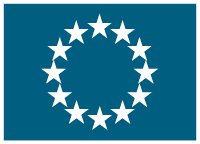Revitalising the Noordduinen : from concrete surfaces to grey dune habitats
(Revitalising Noordduinen)
Date du début: 1 sept. 2010,
Date de fin: 31 déc. 2013
PROJET
TERMINÉ
Background
The Noordduinen has been intensively used for agriculture, military purposes and water extraction. The northern part was temporarily drained for agricultural use and small bomb craters, the Kijkduin fort, and other buildings. Concrete surfaces at Falga and Botgat testify to the military use of the land from 1881 to 2000. Infiltration canals in the Grafelijkheidsduinen are also visible.
Current threats to the area include the coverage of a large surface area by hardened concrete surfaces and buildings that were formerly used by the military, desiccation of the dune slacks, and eutrophication, as a result of agricultural use and atmospheric deposition. Around 5.5 ha is also dominated by the introduced species Japanese rose (Rosa rugosa).
Objectives
The project took place in the Natura 2000 site, Duinen Den Helder Callant-soog. This is one of the few Natura 2000 sites where the target habitat â fixed coastal dune with herbaceous vegetation (grey dunes) â is still present in a well-developed form and covers a large area (more than 50%). The aim of the project was to revitalise this part of the Noordduinen by:
Demolishing and removing the hardened surfaces and buildings left behind by the military, in order to recreate priority habitat type, grey dunes;
Introducing anti-desiccation measures to contribute to the development of humid dune slacks;
Counteracting the negative effects of eutrophication and reconverting an agricultural area into a humid dune slack;
Combating the invasive alien species Japanese rose; and
Improving access to the area for managers and visitors, while protecting the vulnerable areas that are important for species and habitat conservation.
Results
The project objectives were mostly achieved. This included removing asphalt and concrete left behind by a former military enclave on 9 ha of the Natura 2000 site and excavating an agricultural enclave. This area is now also included in the Natura 2000 network and is developing towards grey dune habitat and dune slack habitat. The gradual development into the desired habitat-types is a natural, but time-consuming process. This is amplified by the fact that the area is left for succession in a step-by-step approach in order to allow spontaneous sand drift, but simultaneously preventing too large drifts that could cause damage to adjacent agricultural fields and buildings.
Large sand drift turned out to be a problem already in the initial stages of the project, which saw large amounts of drifting sand cause damage to adjacent properties. This was especially relevant given the narrow dune line, which means that the sand is quickly blown out of the area.
In order to remedy this problem, several measures were needed and the methodology had to be adapted, slowing down progress. For instance, the project planted Ammophila arenaria, a tall grass that helps preventing sand from shifting, in openings in the last dune row, and installed straw screens. In addition, archaeological findings required that an archaeologist was present during soil excavation.
On the agricultural enclave, the nutrient rich top soil was removed and is now turning into wet dune slack.
By cutting vegetation (sods) and removing top soil, the project ultimately restored a total of 11.5 ha, instead of the target surface area of 15 ha, as the remaining locations were too far from access points and the machinery would have caused more damage to the surrounding grey dune habitat than could have been compensated for by the benefits of the restoration.
While the project had initially aimed to remove the alien invasive species Japanese rose completely on 5.5 ha of grey dunes, the population is not yet fully under control. However, the first important steps have been taken â 80 to 95% of the plants have wilted, but it is still to be evaluated in the future if the effects are lasting â and the measures have been pursued further after the project had come to an end. The lessons learnt in the struggle against the Japanese rose, which were also discussed at a symposium organised by the project, are useful to other nature managers in the Netherlands and neighbouring countries.
Another remaining threat is desiccation. This was already partially tackled with the excavation. However, the water level should be monitored continuously and perhaps increased.
The region has always been quite popular as a summer holiday hotspot: holiday houses, camp sites and hotels are numerous. The project improved the infrastructure for visitors with a new system of fences and gates, two observation towers and a short walking trail on the Natura 2000 site. This will make sure that fewer people will roam freely in the area. Most of the area is now only accessible as part of a guided tour.
In addition to these tours, the project also put up information panels, published a brochure, contributed to other publications, and organised an exhibition.
Further information on the project can be found in the project's layman report (see "Read more" section).
Accédez au prémier réseau pour la cooperation européenne
Se connecter
ou
Créer un compte
Pour accéder à toutes les informations disponibles
Coordinateur
- Elly KUIPER
- (Netherlands)




